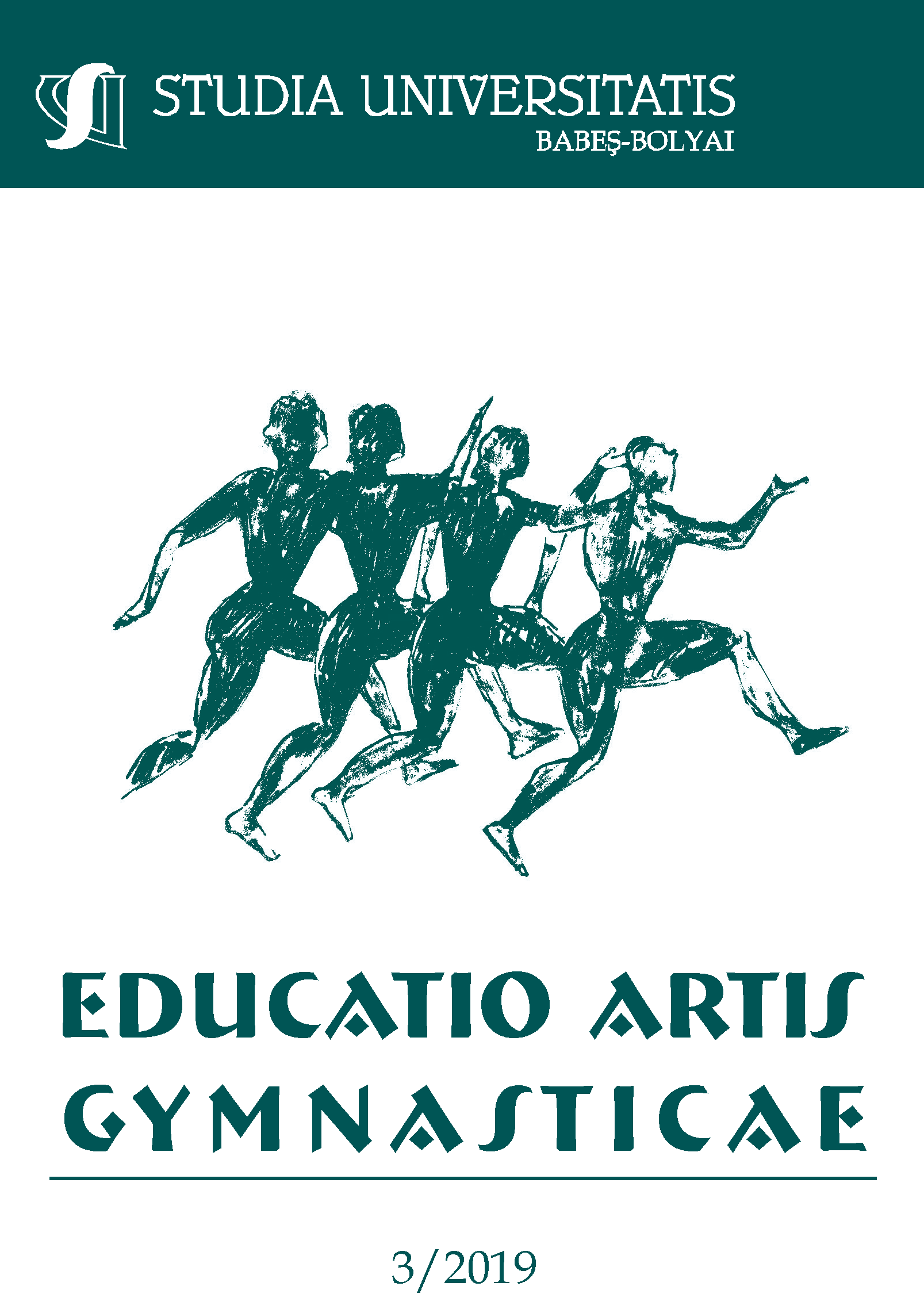EVALUATION OF ELITE JU-JITSU ATHLETES’ PHYSICAL FITNESS USING THE JMG TEST
DOI:
https://doi.org/10.24193/subbeag.64(3).18Keywords:
ju-jitsu fighting, specific fitness test, JMG test.Abstract
The JMG test has been widely used since 1982 and has been included in performance testing in many national federations, especially judo’s. The study was conducted using the JMG (Jose Manual Garcia) test, to evaluate the physical fitness of ju-jitsu international federation’s elite ju-jitsu athletes, during a five days training camp (precompetitive period). The athlete performs three exercises for 1 minute each (a total of 3 minutes) and the goal is to measure ju-jitsu’s functional capacities. Eighteen (No=18) athletes, aged from 16 to 22 years, 12 males and 6 females, were tested. Their fitness was assessed, according to the test, from poor to excellent. The test’s results show that JMG test can be used by athletes of Fighting System (ju-jitsu international federation) which is articulated in a three-minute combat.References
Ambroży, T., Nowak, M., Mucha, D., Chwała, W., Piwowarski, J., & Sieber, L. (2014). The influence of an original training programme on the general physical fitness of ju-jitsu trainees. Ido Movement for Culture. Journal of Martial Arts Anthropology, 14(4), 69–76. https://doi.org/10.14589/ido.14.4.8
Carvalho, M.C.G.D.A. (2000). Testes motores específicos para o judô, necessidade frente à uma limitada quantidade. Kinesis, 23, 179–197.
García, J. (1999). Test JMG/Jose Manuel Garcia. Judo Information Site online Dojo. Retrieved from https://judoinfo.com/testjmg/
Harris, D.M., Foulds, S., & Latella, C. (2019). Evidence-Based Training Recommendations for the Elite Judoka. Strength & Conditioning Journal, 41(2).
Ju-Jitsu International federation. (2011). Competition Rules. Retrieved from www.jjifferees.com/datas/downloads/en/Competition_Rules_v2_1.pdf.
Rodríguez, L.S., Saborit, J.A.P., & Díez, V.G. (2008). Descripción de diversos test para la: valoración de la condición física en judo (Analysis on judo specific and unspecific test). Revista de Artes Marciales Asiáticas, 3(1), 47–60.
Staller, M. (2013a). The analysis of successfully applied techniques in part 1 in ju-jitsu fighting. Lase Journal of Sport Science, 4(2), 14–20.
Staller, M. (2013b). The structure of ju-jitsu fighting fights and its relevance for elite athletes and coaches. Journal of Teaching and Education, 2(2), 241–247.
Sterkowicz-Przybycień, K., Ambroży, T., Jasiński, M., & Kędra, A. (2014). Body build, body composition and special fitness of female top ju-jitsu contestants. Archives of Budo, 10(1), 117–125.
Yadav, N. (2015). To evaluate the effect of one month judo training camp on JMG test. Asian Global Research, 2(5), 28–30.
Downloads
Published
How to Cite
Issue
Section
License
Copyright (c) 2019 Studia Universitatis Babeș-Bolyai Educatio Artis Gymnasticae

This work is licensed under a Creative Commons Attribution-NonCommercial-NoDerivatives 4.0 International License.






